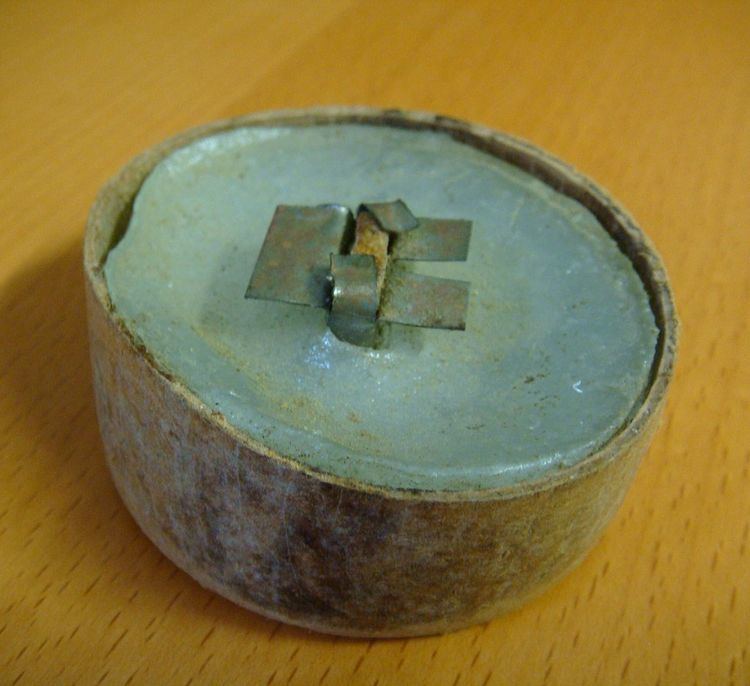 | ||
The Hindenburg light or Hindenburglicht, was a source of lighting used in the trenches of the First World War, named after the Commander-in-Chief of the German army in World War I, Paul von Hindenburg. It was also used in World War II in air raid shelters (Luftschutzkeller) or during power cuts, and mandated black outs as emergency lighting. It was a flat bowl approx. 5–8 cm diameter and 1–1.5 cm deep. It resembles the cover of Mason jar lid (Schraubglasdeckel) and was made from pasteboard. This flat bowl was filled with a wax-like fat (tallow). A short wick (Docht) in the center was lit and burned for some hours. A later model of the Hindenburglicht was a "tin can (Dosenlicht) lamp." Here, a wax-filled tin can has two wicks in a holder. If both wicks are lit, a common, broad flame (zungenfoermige Flamme) results.
It is also mentioned in the novel Stalingrad, by Theodore Plievier, as used on the Eastern Front. Also it is mentioned in Wheels of Terror by Sven Hassel and "In Deadly Combat A German Soldier's Memoir of the Eastern Front" by Gottlob Herbert Biedermann.
